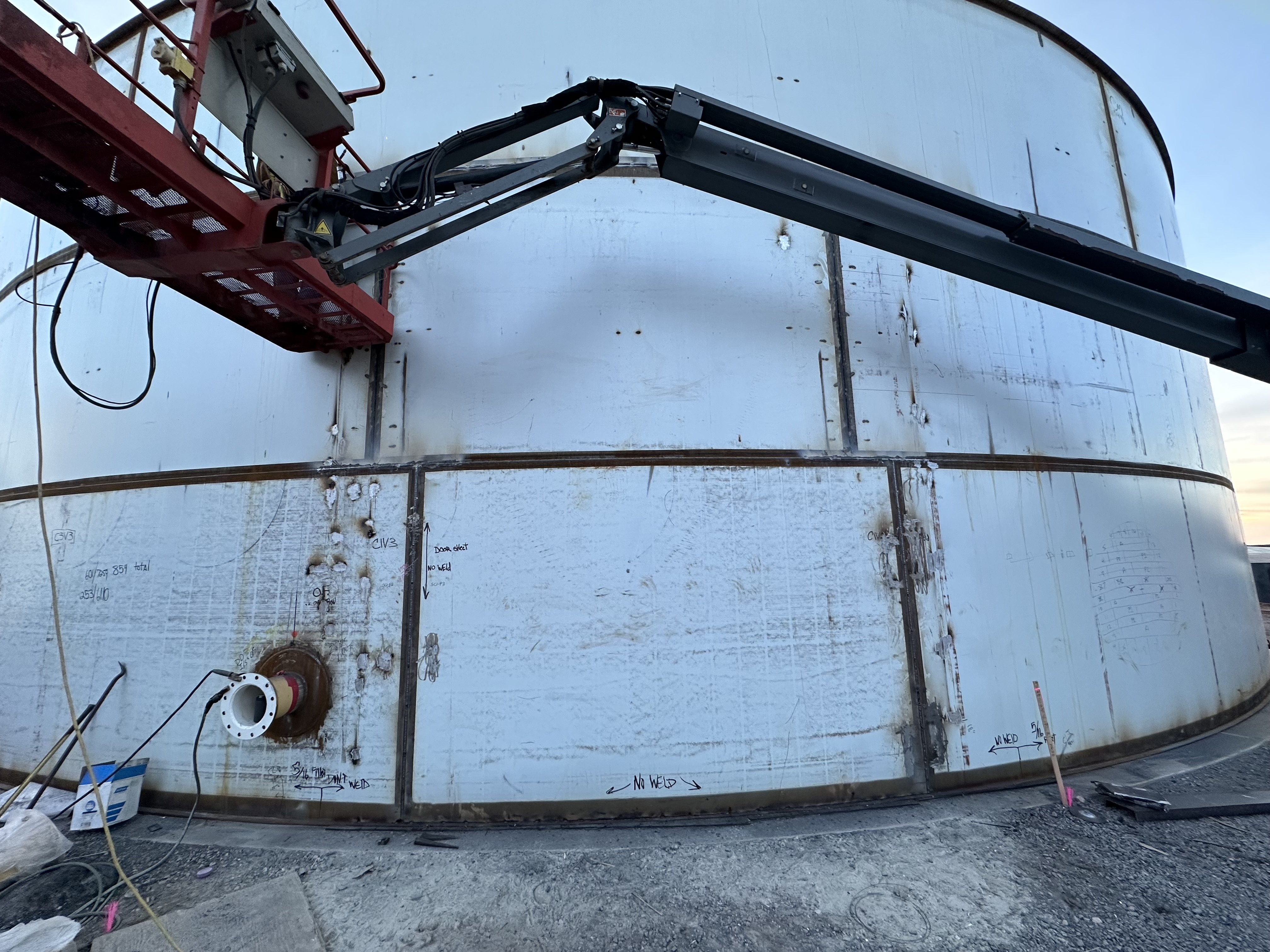Why Normal Tank Welding Inspection is Crucial for Architectural Integrity
Why Normal Tank Welding Inspection is Crucial for Architectural Integrity
Blog Article
Comprehensive Guide to Effective Storage Tank Welding Assessment Techniques and Finest Practices for High Quality Guarantee
In the realm of container welding, extensive evaluation strategies are critical for securing structural stability and ensuring compliance with market policies. As we check out these essential components, it ends up being clear that a positive inspection approach is not just advantageous, yet crucial for functional success in atmospheres dealing with dangerous products.
Significance of Storage Tank Welding Examination

Tank welding evaluation works as a preventative step, determining prospective defects such as cracks, porosity, or incorrect joint penetration before they escalate into major issues. Regular inspections not just abide by sector policies and requirements yet likewise boost the durability of the containers, lowering the need for expensive fixings or replacements.

Visual Examination Strategies
Utilizing methodical visual inspection techniques is important for evaluating the high quality and honesty of bonded joints in storage tanks. This method offers as the very first line of protection in identifying possible problems such as cracks, undercuts, and not enough penetration. The assessor needs to come close to the job with an eager eye, utilizing suitable devices like magnifying glasses, flashlights, and mirrors to improve presence.
During the examination procedure, the assessor should review the weld profile, ensuring it complies with defined standards and standards (Tank Welding Inspection). This consists of examining the bead size, height, and combination with the base material. Assessors should additionally pay close interest to the bordering areas for indications of thermal distortion or contamination that may impact the weld's performance
Documentation of findings is crucial; inspectors must tape-record any kind of anomalies, classifying them by seriousness for further analysis. This organized approach not just aids in instant problem recognition however additionally contributes to long-term high quality assurance by guaranteeing conformity with industry standards. Normal training and calibration of aesthetic assessment methods better boost the integrity of assessments, inevitably causing safer and a lot more long lasting tank frameworks.
Non-Destructive Testing Techniques
Non-destructive testing (NDT) approaches are frequently employed in storage tank welding inspections to examine the integrity of welded joints without jeopardizing their architectural stability. These techniques are vital for recognizing flaws such as fractures, spaces, and additions that could bring about disastrous failings if left unnoticed.
Typical NDT techniques consist of ultrasonic screening (UT), which uses high-frequency acoustic waves to spot inner problems; radiographic testing (RT), utilizing X-rays or gamma rays to visualize weld structures; and magnetic particle screening (MT), which discloses surface and near-surface interruptions in ferromagnetic materials (Tank Welding Inspection). Fluid penetrant testing (PT) is additionally extensively utilized, with the ability of discovering surface-breaking defects by using a fluorescent or shade contrast dye
Each NDT technique has its details applications and benefits, making it necessary for inspectors to pick the appropriate strategy based upon the material and the sort of weld being examined. The combination of these NDT methods into the assessment process enhances the overall pop over to these guys quality control framework, ensuring that bonded containers satisfy security and performance standards. Ultimately, NDT plays an essential duty in maintaining the honesty and long life of tank structures in various industrial applications.

Documentation and Reporting
Ensuring thorough documents and reporting throughout tank welding inspections is essential for keeping compliance with sector standards and helping with efficient interaction amongst stakeholders. Correct documentation works as a detailed record of go now assessment activities, searchings for, and any kind of rehabilitative actions taken throughout the welding process. This details is important not only for high quality assurance yet also for audits and regulative reviews.

A well-structured inspection report must include details such as the date of assessment, names of assessors, welding treatments employed, products utilized, and any type of discrepancies from established standards. Furthermore, pictures and layouts can improve the clearness of the report, supplying visual context to the findings. It is also essential to record any kind of non-conformities together with their resolution, making sure that all stakeholders are informed of possible risks and the steps taken to reduce them.
Furthermore, maintaining a centralized data source for all assessment reports permits easy retrieval and review, fostering a society of transparency and accountability. By prioritizing meticulous documentation and coverage, organizations can not just maintain quality control however also enhance their track record within the industry, ultimately bring about improved safety and security and operational efficiency.
Continuous Renovation Practices
Constant improvement techniques are necessary for boosting the quality and efficiency of tank welding inspections. Executing an organized approach to assess and improve evaluation techniques fosters a society of quality control within the organization. One efficient method includes routine training and upskilling of evaluation workers to stay abreast of the most recent welding modern technologies and requirements. This guarantees inspectors possess the required knowledge and abilities to recognize problems precisely.
Additionally, utilizing data-driven evaluation enables companies to track evaluation results, determine patterns, and determine locations for enhancement. Utilizing devices such as origin reason evaluation can assist in recognizing the underlying concerns bring about defects, making it possible for targeted treatments. Additionally, getting feedback from assessment teams and stakeholders produces a joint atmosphere that urges ingenious solutions.
Incorporating sophisticated innovations, such as automated examination systems and real-time tracking, can dramatically improve the precision and rate of examinations. Normal audits of the inspection processes additionally contribute to a culture of liability and continual improvement. Inevitably, these continual improvement methods not only raise the quality of storage tank welding assessments however likewise add to general functional quality and customer complete satisfaction.
Final Thought
In final thought, efficient container welding examination is pivotal for making certain the architectural integrity and security of storage systems, especially those taking care of harmful materials. Employing a mix of visual inspection strategies and non-destructive screening methods helps with the very early identification of issues, thus preserving pop over to this site conformity with sector criteria.
Report this page